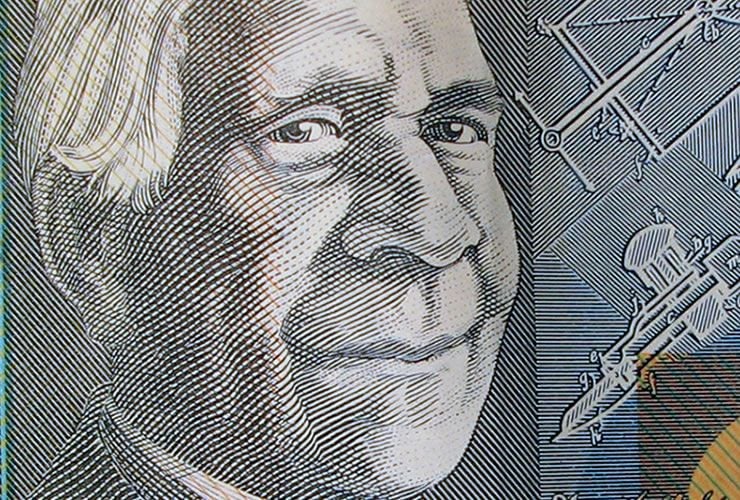GBP/AUD Continues Falling as Politicians Fail to Provide Clarity on Timing or Road-Map for Brexit

Continued clouds of uncertainty unnerved investors and sent the pound tumbling even lower on Monday whilst economists fretted over global growth and the potential ripple effects of Brexit
The British pound fell below the post-Brexit extreme lows of 1.8001 versus the Australian dollar on Monday proving the spike lower in sterling had not just been a knee-jerk overreaction but possibly a more damaging event with wider ramifications, both for the UK economy and the rest of the world.
Speaking on his weekly update video, Chief FX Strategist John Kicklighter, of DailyFX.com said the event would almost certainly lead to a major shift away from riskier assets, substantial deleveraging and a possible slow-down on a global economic scale.
At its core, he suggested, Brexit had revealed a growing, underlying , trend towards 'protectionism' in world politics which would have divisive and probably negative effects for global growth.
In addition, the Australian dollar itself could come under renewed pressure from heightened expectations that the Reserve Bank of Australia (RBA) might reduce interest rates at its meeting in August.
Barclay's Capital's David Fernandez said in a note that he was revising his previous recommendation that the RBA would stay on hold for 2016 due to the ripple effects of Brexit impacting on Aussie GDP:
"With the UK voting to leave the EU at the referendum, our revised global growth forecasts highlight a negative impact most notably in UK and Europe, but also look for global growth repercussions to be felt in many countries, including China and the US (Global Economics Weekly: A 'Leave' into uncertainty, 24 June 2016). In light of these developments, we have revised lower our Australia GDP forecasts by 10bp, to 3.1%, in H2 16 and 20bp, to 3.4%, in 2017. We have also lowered our inflation forecasts to 1.6% from 1.7% in H2 16."
To conclude, the analyst expected the following action from the RBA on interest rates:
"Therefore, we now think the RBA is likely to cut the cash rate by 25bp, to 1.50%, at its August meeting, while keeping the policy rate on hold afterwards for the foreseeable future."
Despite weakness to the Australian dollar it outperformed the pound on Monday morning as a speech by George Osborne gave little additional clarity on the process or timing of Brexit.
Although trying to assure markets he was fully behind the decision of the British people and would confront the issues and make the most of it, he said he would probably not be making any decisions about public spending until a new leader was chosen, nor was article 50 - which triggers a country leaving the EU - to be invoked until the new leader had been chosen.
David Cameron has vowed to stay on as Prime Minsiter for 3 months to "steady the ship" before a new leader to take over is found, currently probably Boris Johnson.
The core of EU nations, however, appear to want the Uk to engineer a quicker exit after a joint statement from the foreign ministers of France, Germany, Italy, Holland, Belgium and Luxembourg over the weekend asked the UK to begin the exit negotiations immediately.
From a tehncial point of view GBP/AUD broke below the post-brexit spike lows on Monday morning proving the intial down-move response to Brexit was not just a knee-jerk reaction but potentially part of a deeper sell-off.
Having breached below the 1.8001 lows, the pair is now likely to continue down to thre next target at 1.7500.
Brexit Plunge Sent Sterling Reeling
The British pound was down over 5.0% against the Australian dollar in trading on Friday after the UK voted to leave the European Union (EU).
The GBP/AUD pair fell from a pre-result 1.9720 to a post-result low of 1.8017 in extraordinary trading on Friday morning before recovering to 1.8252 following an assured performance by Bank of England Governor Mark Carney who sought to soothe market fears.
The Bank of England has made additional funds available and believes they are well prepared to handle any post-Brexit financial market developments.
The Australian currency weakened itself against other stronger counterparts such as the dollar owing to falling risk appetite and declining oil prices - which came down by 6.0%.
Also keeping the Aussie under pressure were renewed expectations that the Reserve Bank of Australia (RBA) would cut interest rates at their next meeting:
“In the wake of lower growth assumptions we have seen expectations of additional RBA easing soar. Ahead of the UK vote the market implied only a 37% chance of a cut in August, post the Q2 CPI print. Post the Brexit vote that probability has spiked to over 61%,” comments CIBC Global Market’s Jeremy Stretch.
Advertisement
Increased expectations that the RBA will cut rates in August coupled with expected ‘inertia’ from the Fed, which is unlikely to raise rates is expected to weigh on the AUD/USD.
"Our existing view on the RBA is that persistently low inflation narrowly favoured a rate cut in August. We think that Brexit could place additional pressure on the RBA to cut rates if continued market volatility materially dents confidence," says a post-Brexit note from ANZ Bank.
ANZ believe the strength of the AUD/USD exchange rate to be a factor for consideration at the RBA.
"We also think the AUD/USD will be important in shaping the RBA’s view on interest rates, where the decline to date in the exchange rate has only returned it to levels prevailing in early June," say ANZ.
ANZ are forecasting AUD/USD to fall to 0.67 by December 2016.
CIBC's Stretch is forecasting the Australian vs US dolalr exchange rate to fall to 0.7286 (the pair is currently trading at 0.7439).





